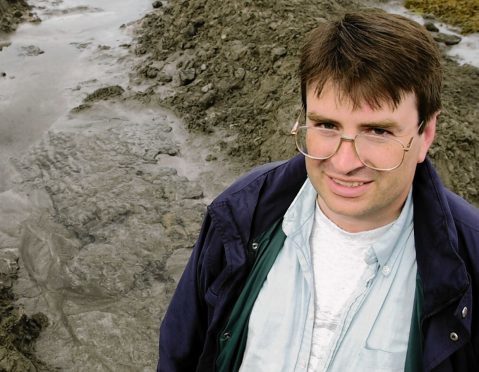No lasting damage has been caused to a prehistoric treasure in Skye after concerns about vandalism.
Police issued an appeal for information last week amid concerns that a man poured plaster into two of Staffin’s famous dinosaur prints.
But yesterday, police confirmed that there was no permanent damage caused to the prints.
It is understood that officers have spoken to man who sparked the appeal.
Skye police confirmed the prints had not suffered lasting damage on social media.
In a statement they said: “Good news – now confirmed no permanent damage to dinosaur footprints at Staffin
“Thanks to all who reported/assisted with our appeal. Information provided by followers helped confirm the circumstances around reported damage/criminality.”
Police said they had been alerted to an alleged vandalism at Staffin beach on Wednesday, December 28.
They said that plaster-cast appeared to have been poured into two of the footprints on the beach.
It is good to hear that the local folk of Staffin are looking after their fossil heritage though as it could easily have been a lot more serious.
Neil Clark, curator of palaeontology at The Hunterian museum and art gallery at Glasgow University has been heavily involved in studying Skye’s prehistoric heritage.
He said that it appears that the person responsible was “not intending to do any damage”
He added: “It is good to hear that the local folk of Staffin are looking after their fossil heritage though as it could easily have been a lot more serious.”
The prints at Staffin in the north of Skye have become a popular tourist attraction on the island.
Fossil tracks were found in 2002. Experts made casts of the footprints to preserve copies, knowing they would ultimately be eroded by the tide.
Some were kept at Staffin Museum. Others went to the Hunterian and the National Museum of Scotland in Edinburgh.
Two years later, what were thought to be the smallest dinosaur footprints yet discovered went on show in Scotland for the first time.
The three-toed prints of a coelophysis were smaller than a 5p coin – and inside a larger print of another dinosaur.
